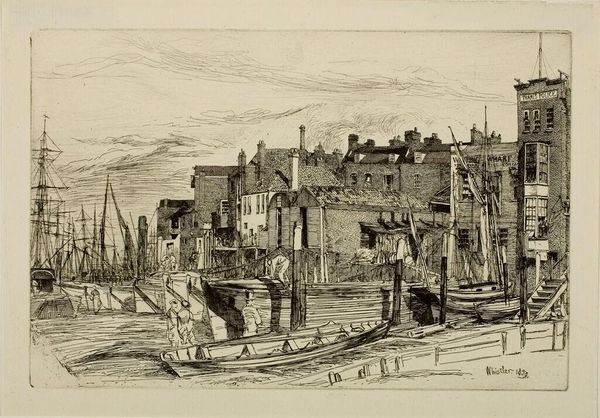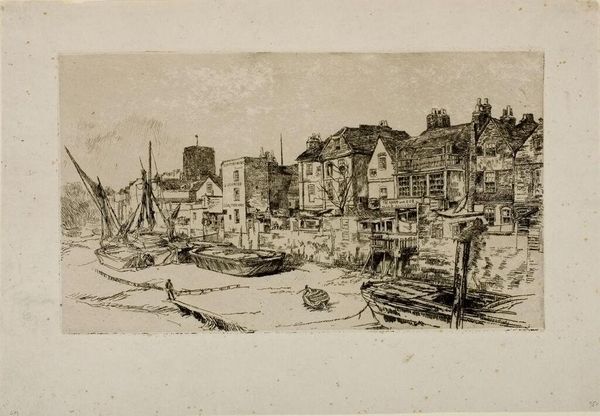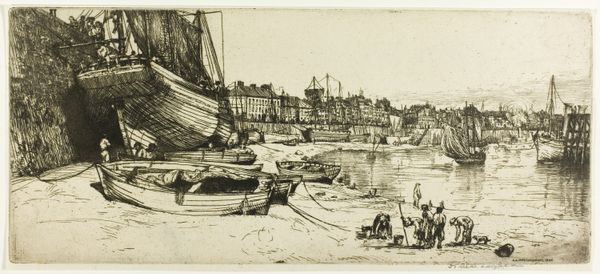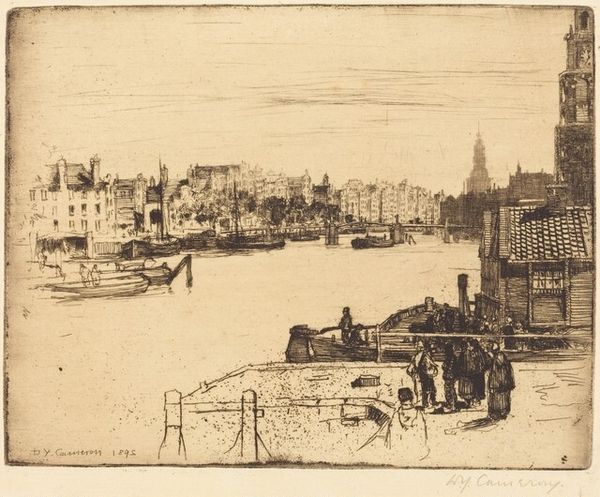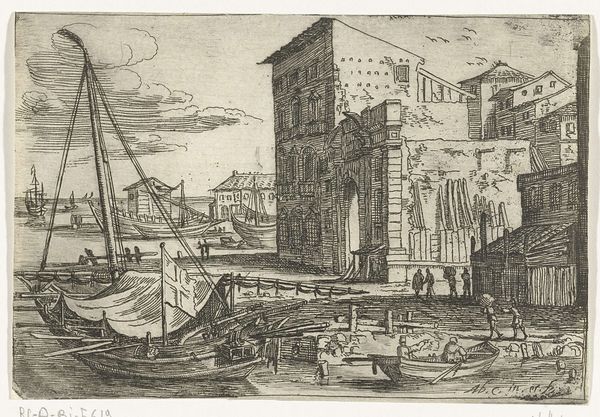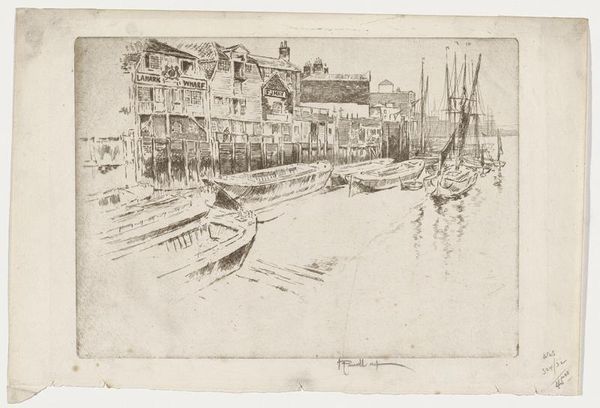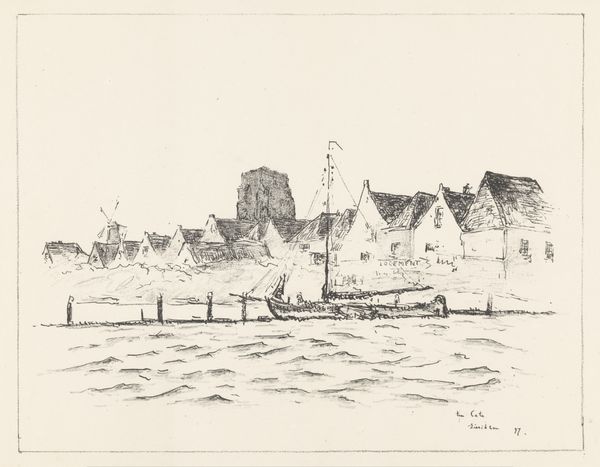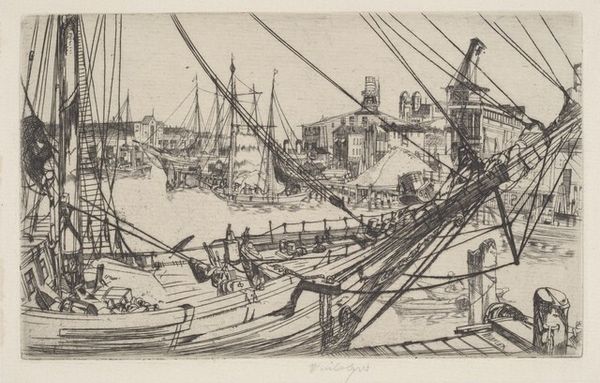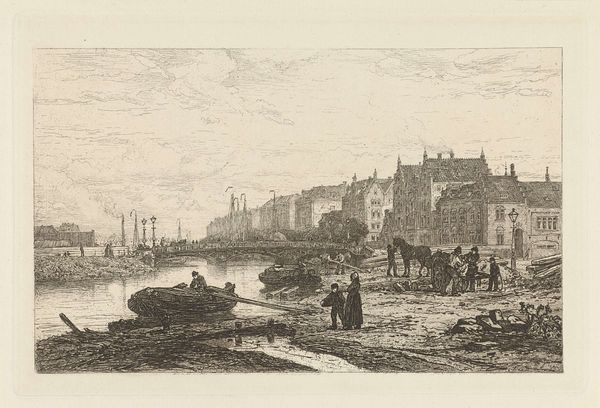
Copyright: Public Domain: Artvee
Curator: Ah, yes, “Thames Police” by James Abbott McNeill Whistler, an etching from 1859. What strikes you first about it? Editor: The density, definitely. A claustrophobic feeling despite being a waterside scene. It's incredibly detailed, almost overwhelmingly so. Curator: I see it too. Etchings, especially from this period, are so precise. Whistler’s skill emphasizes a realism—note the architecture, how meticulously rendered each building appears, and then reflect on the time it took to do this! Each mark bears historical witness. Editor: Precisely. The detail gives way to a portrait of industrial labor, of lives intertwined with the Thames. Those aren't pleasure boats, are they? More working vessels, laden with the promise of work, but also the exploitation of labour tied to urban life. It brings up narratives around urbanization and the working class that shaped Victorian England. Curator: The symbolism in maritime art often revolves around journeys, exploration, risk, and reward. Are those visible dynamics that permeate urban life represented within the symbolic structure of London's existence as an active port city? Editor: Indeed. These forms create a historical narrative, showing how the river serves as a backdrop for London's urban development and, indeed, for the development of class structure at large. These details reinforce how economic activity intertwines with identity, class, and social power, even visible at play in maritime traffic. Curator: It is the confluence of the romantic, yes, but here shaped within a gritty industrial reality that serves to tell the more complicated narratives of London itself. And if we reflect on that tower? How Whistler chose that exact framing that placed that architecture at the edge, a type of guardian watching it all play out. Editor: Yes, like the port police, but expanded: the entire infrastructure of the port itself, its relationship to structures of authority in that historical context, its relationship to the entire structure of industrial urbanism on every street. I would agree, a crucial detail with vast meaning to decode. Curator: Exactly, revealing, as always, there's so much more to these glimpses into the past, and they ask us for consideration of how our memories form within the historical, political and personal circumstances of art itself. Editor: Right, even seemingly simple etchings open up entire worlds worth excavating.
Comments
No comments
Be the first to comment and join the conversation on the ultimate creative platform.

